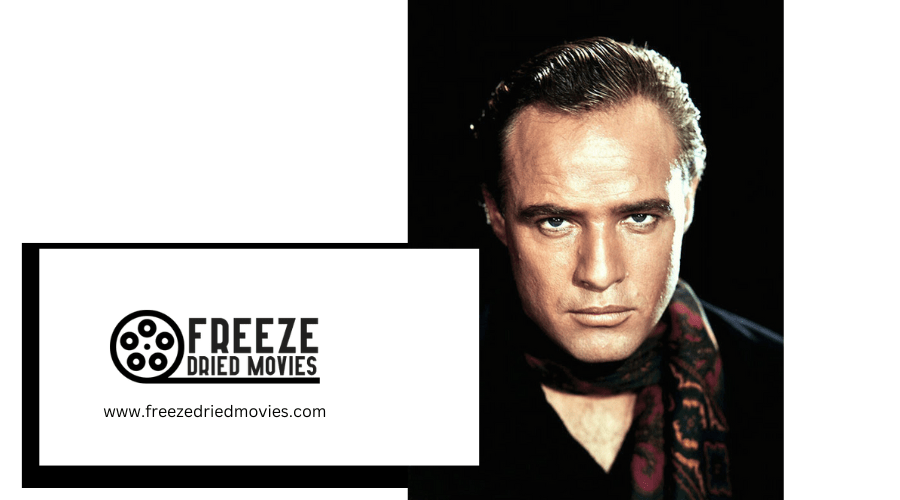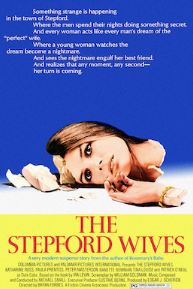Leading Actors of the 1950s Movie Era: Icons of Golden Age Cinema
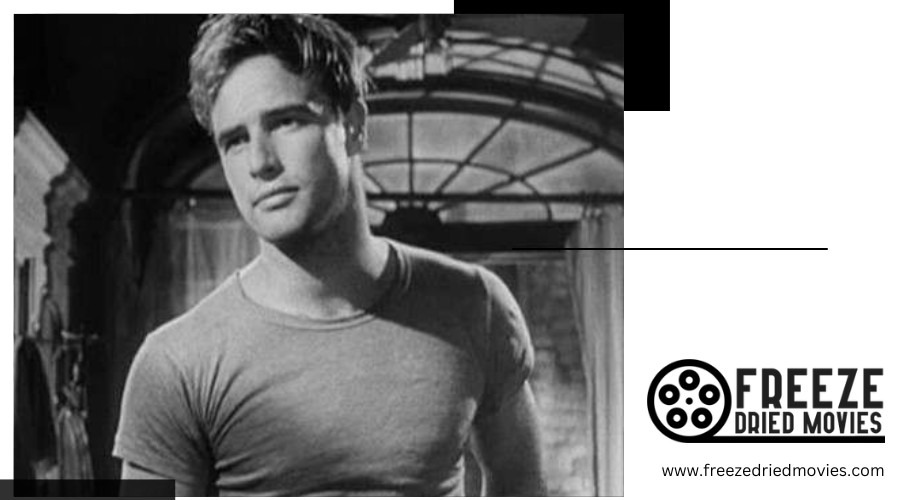
The 1950s movie era is often celebrated as the Golden Age of Hollywood, a time when the silver screen was graced by an array of talented actors whose performances have become the stuff of legend. In this period, actors like Marlon Brando and James Dean captivated audiences with their on-screen magnetism and method of acting, which brought a new level of emotional depth to their roles. Actresses during this era were also shining stars in their own right, with Marilyn Monroe and Grace Kelly being just two examples of leading ladies who combined talent, elegance, and global appeal in their memorable appearances.
Hollywood's studio system was at its peak, churning out films that would forever impact the film industry and leave enduring legacies. Directors and producers like Alfred Hitchcock and Billy Wilder were instrumental in defining the era's cinematic aesthetic, bringing groundbreaking stories and innovative filmmaking techniques to audiences worldwide. The films of the 1950s continue to influence contemporary cinema and remain essential viewing for anyone seeking to understand the evolution of film as an art form.
Key Takeaways
- The 1950s marked a period of exceptional talent and iconic performances in Hollywood.
- Films from the era defined the careers of actors and continue to influence modern cinema.
- The combined efforts of actors, directors, and the studio system created enduring cinematic legacies.
The Golden Age of Cinema
The Golden Age of Cinema, often referred to as Hollywood's Golden Age, was an era marked by unparalleled advancements in film and the rise of the quintessential movie star. During this period, cinema evolved into a major form of entertainment and art.
Key Filmmaking Centers
Hollywood served as the heart of the industry, emerging as the epicenter of American filmmaking. Other global centers, such as Italy's Cinecittà and India's Bollywood, also saw substantial growth. These hubs were not only production sites but also cultural beacons shaping the global perception of cinema.
- Hollywood, U.S.: The dominant force in global cinema.
- Cinecittà, Italy: Known for lavish historical epics.
- Bollywood, India: The world's largest film producer by number of films.
Signature Styles and Genres
Filmmakers gravitated toward certain genres that defined the era: Film Noir offered mystery and moral ambiguity, while lavish Musicals provided escapism. Dramas starring figures like the "Golden Boy" of Hollywood played to the strengths of actors whose on-screen presence captured audiences worldwide.
- Film Noir: Dark, brooding aesthetics with complex protagonists.
- Musicals: Colorful, choreographed spectacles with intricate set pieces.
- Dramas: Grounded storytelling showcasing actors' versatility.
Innovation in Techniques
The Golden Age brought about technical innovations in both sound and visuals. These advancements included the use of Technicolor in film and improved sound recording techniques, enabling a richer, more immersive experience that cemented the status of actors and actresses as larger-than-life figures.
- Technicolor: Pioneered vivid, three-color process.
- Sound recording: Enhanced clarity and fidelity.
Actors and actresses who became synonymous with the Golden Age honed their craft on the evolving canvas of cinema, leveraging these innovations to become enduring icons.
Legendary Leading Men
The 1950s movie era was marked by exceptional talent, with leading men who elevated film through innovative acting techniques, command of the dramatic, and captivating charm in romantic comedies.
Innovators of Method Acting
Method acting became a powerful force in the 1950s, led by actors committed to deep emotional authenticity. Marlon Brando changed cinematic acting with his intense performances in films like "A Streetcar Named Desire." Equally influential, James Dean became an icon with his roles in "Rebel Without a Cause" and "East of Eden," while Montgomery Clift's vulnerability in "A Place in the Sun" captured audiences.
Icons of Westerns and Dramas
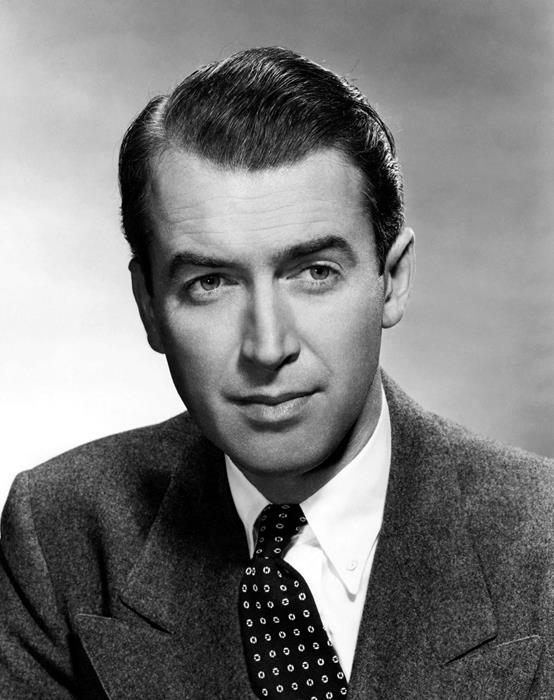
The Western and Drama genres were defined by actors who could carry the weight of complex narratives. James Stewart showcased versatility, excelling in both Westerns like "Winchester '73" and dramas such as "Vertigo." Kirk Douglas's tough persona was immortalized in "Spartacus," while Charlton Heston's epic roles in films such as "Ben-Hur," solidified his status as a cinematic legend.
Champions of the Romantic Comedies

Charisma and comedic timing were essential in romantic comedies. Cary Grant was the epitome of the charming lead, with unforgettable performances in "To Catch a Thief." Rock Hudson, in tandem with Doris Day, epitomized the romantic comedy with "Pillow Talk." Tony Curtis further defined the genre with his work in "Some Like It Hot" alongside Marilyn Monroe.
Iconic Leading Ladies
Certain actresses became the epitome of cinematic allure and dramatic prowess in the 1950s movie era, marking their spot as true Hollywood royalty.
Queens of the Silver Screen
- Marilyn Monroe: Monroe was the quintessential symbol of glamour and seduction in Hollywood. Her performances in films like "Some Like It Hot" captured the hearts of audiences worldwide.
- Elizabeth Taylor: Known for her striking violet eyes and lustrous talents, Taylor delivered memorable performances in classics such as "A Place in the Sun" and "Cat on a Hot Tin Roof."
- Grace Kelly: Kelly's poise and elegance on screen in films like "Rear Window" propelled her into the pantheon of Hollywood's most cherished leading ladies.
- Doris Day: Representing the girl-next-door charm, Day shone brightly in musicals and romantic comedies, securing her place as a beloved American sweetheart.
Masters of Dramatic Roles
- Joanne Woodward: Her Academy Award-winning role in "The Three Faces of Eve" demonstrated Woodward's incredible range and cemented her status as a master of drama.
- Susan Hayward: Hayward's Oscar-winning performance in "I Want to Live!" showcased her as a powerhouse of the dramatic arts.
- Ava Gardner: Best known for her smoldering on-screen presence, Gardner's roles in films like "The Barefoot Contessa" highlighted her depth as a dramatic actress.
- Jean Simmons: Simmons' versatility shone through in a career that included both captivating dramas and light-hearted musicals, proving her talent was boundless.
Defining Films of the 1950s
The 1950s cinema landscape was a dynamic blend of genre innovations and cinematic milestones that shaped the future of film. This era saw the convergence of poignant dramas, the glorification of Western and adventure films, and the glamorous resurgence of the musical genre.
Groundbreaking Dramas
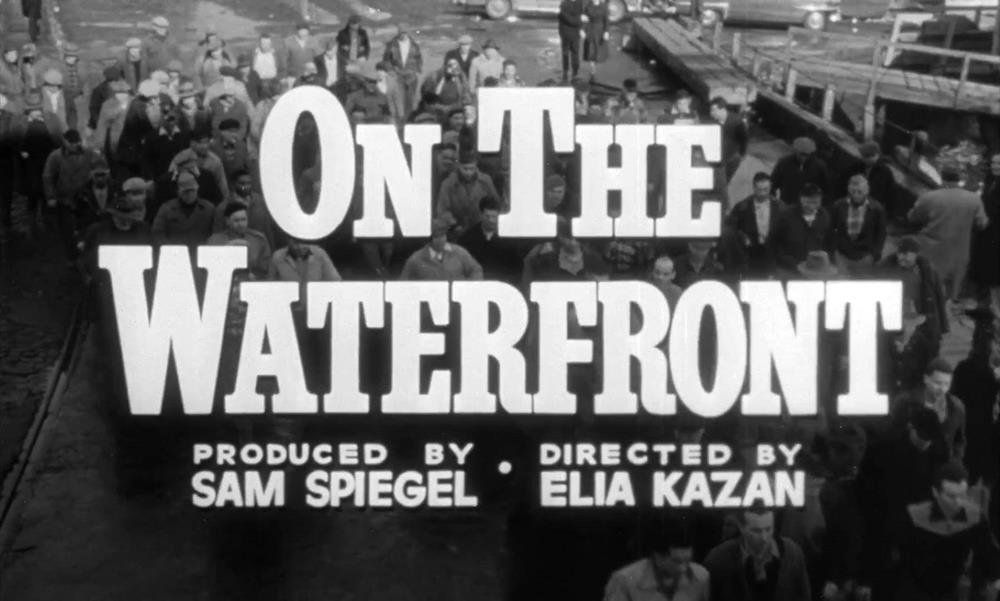
"On the Waterfront" (1954) is often hailed as a milestone in film history. It delivers a powerful, socially conscious narrative about corruption and redemption. Marlon Brando's performance not only solidified his position as a Hollywood icon but also set a new standard for on-screen realism.

"A Streetcar Named Desire" (1951), with its raw emotional depth, and "Cat on a Hot Tin Roof" (1958), noted for its intense familial conflicts and memorable performances, both carved their names into the annals of 1950s drama.
Western and Adventure

The decade was marked by larger-than-life adventures and the Western frontier. Films like "High Noon" (1952) utilized the tension of the Western duel to explore moral complexities, while "The Bridge on the River Kwai" (1957) offered an epic tale of survival and psychological warfare set against the backdrop of World War II.
"Shane" (1953), with its iconic gunfight scenes and themes of heroism, gave audiences a glimpse into the romanticized American West, which was etched into the collective cultural memory.
Rise of Musical Cinema
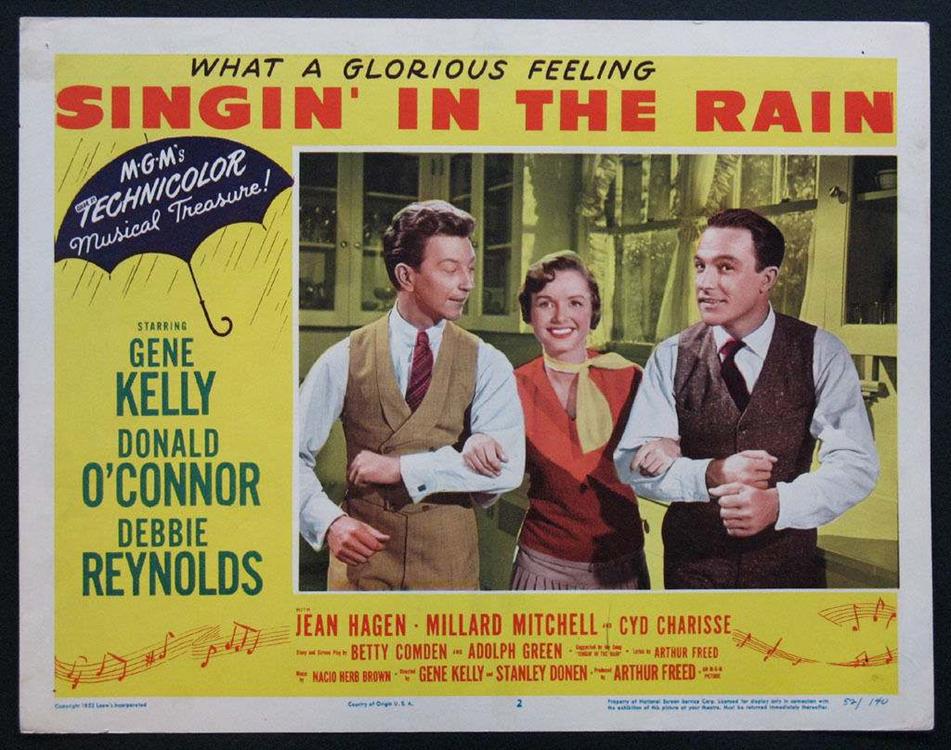
Musicals blossomed during the '50s, offering escapism and dazzling spectacle. "Singin' in the Rain" (1952) remains a definitive film of this genre, encapsulating the transition from silent films to "talkies” with its innovative dance sequences and infectious joy.
During the same time, "The King and I" (1956) delivered powerful performances combined with memorable musical numbers, inviting audiences to relive the splendor and romance of an exotic bygone era.
In summary, the 1950s were a formative time for cinema, producing films across multiple genres that continue to captivate and inspire audiences and filmmakers to this day.
Key Directors and Producers
In the 1950s, the landscape of cinema was shaped by the creative impulses of filmmakers and the strategic decisions of producers. The era witnessed the rise of visionary directors who left an indelible mark on the industry and influential producers who pioneered new ways to bring stories to life.
Visionary Directors
Alfred Hitchcock, often referred to as "The Master of Suspense," was a prominent figure in the 1950s movie era. His 1954 masterpiece, Rear Window, is a testament to his directorial prowess, showcasing his ability to meld suspense with a deep understanding of human psychology. Hitchcock's contribution to cinema during this period was immense, with works like Vertigo (1958) and North by Northwest (1959) that continued to redefine the thriller genre. His influence extends beyond the decade, resonating even in modern-day filmmaking.
In the same decade, Billy Wilder secured his reputation as one of Hollywood's most versatile directors. With films ranging from the film noir classic Sunset Boulevard (1950) to the witty Some Like It Hot (1959), Wilder demonstrated a deft touch in directing across genres. He was also noted for his successful collaboration with actors, often coaxing career-defining performances.
Influential Producers
The 1950s also heralded an age where producers became cornerstones of the cinematic experience. Walt Disney, known for his innovations in animation, produced groundbreaking films like Cinderella (1950) and Peter Pan (1953), employing cutting-edge technology to enchant audiences of all ages. His influence went beyond animation as he expanded his empire to include theme parks, further integrating the Disney brand into American culture.
Another producer of note was Mike Todd, whose production of Around the World in 80 Days (1956) displayed his flair for creating spectacles on the big screen. The film won multiple Academy Awards, including Best Picture, and was a testament to Todd's ability to produce a film that captivated the Academy as well as the public. Todd's contributions helped cement the 1950s as a time when the producer's role was as impactful as that of the director.
Studio System and Film Production
The studio system in the 1950s was characterized by a handful of major Hollywood studios controlling a majority of the film production process, while the independent film movement provided a counterbalance, introducing fresh narratives and styles. This era also saw significant changes in production codes, which impacted film content and storytelling.
Major Hollywood Studios
Universal Pictures, Paramount, and Columbia were part of the powerful ensemble of studios that dominated the Hollywood landscape. They functioned as self-contained entities, overseeing a movie's journey from script to screen. Paramount, known for its glamorous star system and blockbuster productions, epitomized the era's studio might.
- Universal Pictures: Established themselves with a mix of genres, including impactful film noirs and musicals.
- Paramount: Maintained a roster of renowned directors and actors, creating a legacy of critically acclaimed films.
Independent Film Movement
Simultaneously, a burgeoning independent film movement began to emerge, providing a stark contrast to the streamlined output of the major studios. This movement was marked by smaller budgets and often more artistic and experimental approaches to storytelling. These films challenged the status quo, offering audiences narratives that were often more reflective of contemporary societal issues.
Changes in Production Codes
The 1950s also experienced shifts in the production codes that governed content. The original strict guidelines of the Hays Code began to relax in the face of competition from television and the changing social mores, leading to a slow but steady liberalization of what could be shown on the silver screen. The studios, including Columbia, known for its sagacity in balancing artistic expression with commercial success, had to navigate these evolving rules to maintain profitability and relevance.
Impact and Legacies
The leading actors of the 1950s not only captivated audiences with their performances but also left indelible marks on society and the film industry through their philanthropy, post-career achievements, and lasting influence on modern cinema.
Acts of Philanthropy
Many prominent figures of the 1950s silver screen were known for their philanthropic efforts. They supported various charities and non-profit organizations, leveraging their fame to guide public attention to important causes. One notable example is celebrities who served in the United States Army during World War II, which included stars like Audie Murphy. Murphy later used his influence to raise awareness for veterans' issues.
Post-Career Achievements

Upon retiring from acting, some of these actors remained in the public eye through different avenues, including business and racing ventures. For instance, Paul Newman not only received a Lifetime Achievement Award for his acting career but also created Newman's Own, a brand that donates all after-tax profits to charity. Additionally, actors like James Dean, who was passionate about racing, became iconic for their involvement in the sport, despite Dean's tragic and premature death, which cut short a potential racing career.
Influence on Modern Cinema
The techniques and styles developed by actors of this era continue to resonate in contemporary filmmaking. The method acting approach, popularized in the 1950s, is still taught and emulated. Actors like Marlon Brando, who was praised for bringing emotional depth to his characters, greatly influenced subsequent generations of actors. Similarly, the atmospheric storytelling and visual style of film noir, emerging during this time, has shaped the narratives of many modern crime dramas.
Beyond the Silver Screen
The leading actors of the 1950s not only captivated audiences on screen but also led intriguing lives off of it. From their homes in opulent neighborhoods like Beverly Hills to their involvement in societal issues, these actors' influence reached far beyond their film roles.
Hollywood Lifestyle
In the 1950s, many leading actors chose to reside in Beverly Hills, California, synonymous with luxury and exclusivity. The opulent estates and manicured gardens of this community were a testament to their success. Neighboring areas like Pasadena also housed some stars, offering more seclusion away from the paparazzi. Their homes became extensions of their public personas, embodying the glamour associated with Hollywood's Golden Age.
Political Activism and Public Life
Some actors used their fame to become involved in political activism. They lent their voices to civil rights movements, campaigned for political candidates, or spoke out against injustices of the era. Their status often thrust them into the public eye, making their opinions reverberate both in California and across the country. This sometimes controversial involvement was a testament to their commitment to leveraging their public influence for societal change.
Contributions Beyond Acting
The stars of the 1950s were known for more than just their acting; they participated in a variety of activities beyond acting. Racing, for example, was a popular pastime, with some actors even owning their own race cars or sponsoring racing events. Additionally, charity work was significant, with many supporting philanthropic causes, hosting fundraisers, or establishing their own foundations. Their contributions helped shape their legacies, demonstrating a commitment to altruism and community enrichment that lasted well beyond their years on the silver screen.


